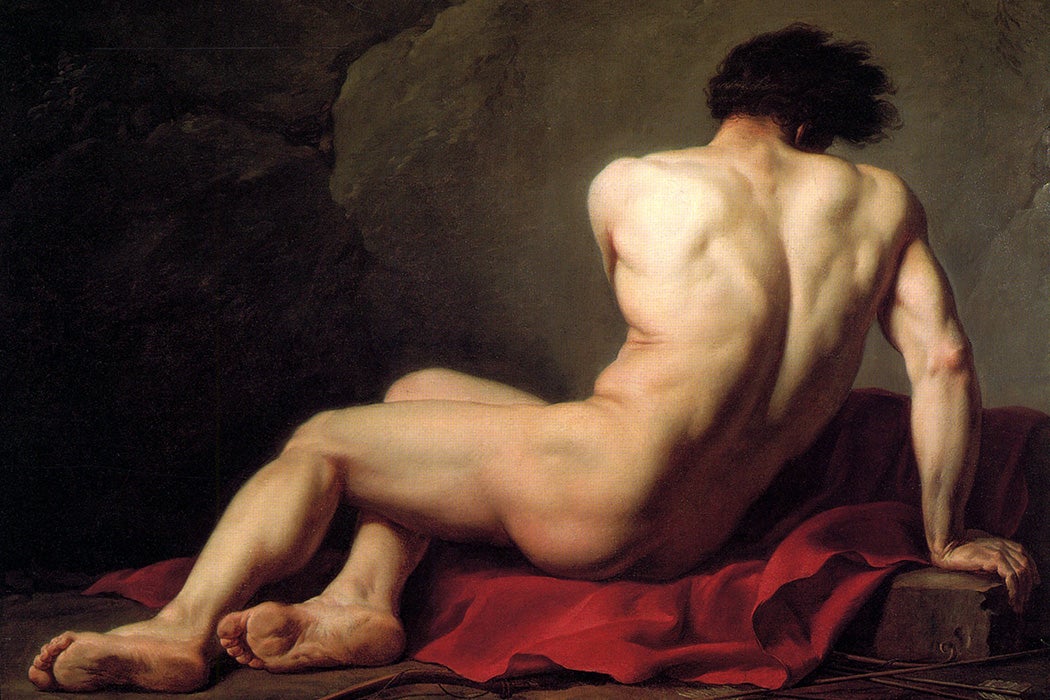Have you ever looked at a giant history painting by Jacques-Louis David, Delacroix, or Ingres and wondered about the actual people in the painting, posed as if adrift on the raft of a ship or storming a barricade in Paris? In the Oxford Art Journal, historian Susan Waller explores the question of who modeled for French artists from the mid-seventeenth to the mid-nineteenth century.
Professional artists didn’t start out drawing live models. Training at the Académie Royale during the eighteenth century, students began by drawing “from the flat”—copying prints or drawings by masters—then advanced to drawing from casts of antique sculpture. This way, they internalized idealized proportions so they could see the living body on the model stand.
For their anatomical studies, or académies, art students worked with three or four modèles professionnels, salaried and pensioned officials under the monarchy who wore a livery, carried a sword, and were housed in the Louvre. Modèles professionnels posed for two hours a day, with a break each hour, maintaining the same pose for three days.
Hiring a few models on a permanent basis continued to be the custom even after the French Revolution began in 1789, as the Ecole des Beaux-Arts officially took the place of the Académie in 1795. This would change in 1836, when modèles occasionnels were first hired per session (à la séance), in the process losing all of the benefits models had formerly received. The artist-model relationship became a commercial exchange instead of a sustained professional relationship.
Waller relates this shift to the evolution of the function of the model in painting. “The conceptual basis of work from the model, as initially articulated in the sixteenth and seventeenth centuries,” she explains, “was the premise that humankind’s greatest and noblest characteristics were embodied in the idealized nude male.” At the Académie Royale, students looked at the flawed live body before them and learned to negotiate its discrepancies with the ideal form they wanted to put down on paper. Académies in the eighteenth century tended to depict a generalized ideal, a prototypical figure rather than a specific body or face.
At the start of the nineteenth century, however, artists moved away from depicting the beau idéal to capturing the musculature and expression of actual people and the particularities of their physical bodies. Students at the École des Beaux-Arts spent more time in front of the posed model than they had in the previous century, observing a wider range of physiques.
Weekly Newsletter
In order to determine models’ social standing in the nineteenth century, Waller looks to physiologies: illustrated humorous taxonomies of French society in which caricaturists described the typical uniform, habits, bearing, and social stature of each profession. Waller attributes their extraordinary popularity to Parisians’ anxieties about changes in the urban populace taking place at the time.
By the 1840s, modeling was no longer a viable career option the way it once was, so the part-time job, now paid a low hourly wage, went to young, newly arrived migrants from the suburbs, who might also support themselves by working as peddlers, cobblers, construction workers, hairdressers, or wrestlers in county fairs. In caricatures, these models were portrayed as shiftless, unkempt, scruffy, disheveled. Ironically, as drawing from life became increasingly important in the fine arts, models’ standing in the society sank.







